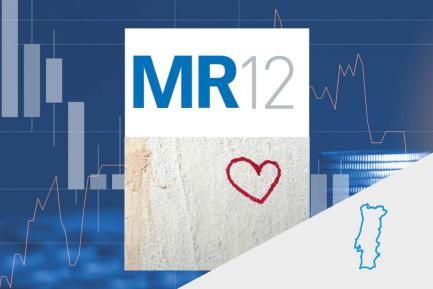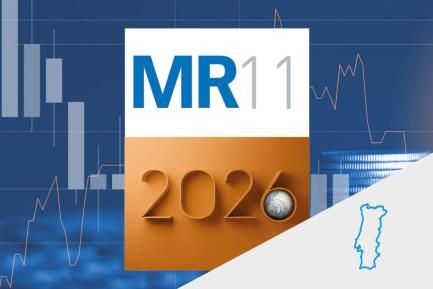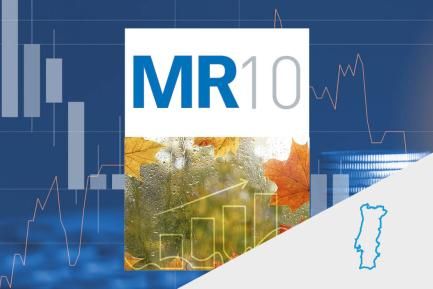
How is the Portuguese Recovery Plan going?
To date, the investments already approved as part of the Portuguese Recovery and Resilience Plan (RRP) amount to 12,249 million euros, compared to total planned investments of 16,644 million euros. This represents an approval rate of 74%, which in principle looks promising in terms of getting the most out of the NGEU funds that Portugal will receive up until 2026.
However, the transfers actually made to the beneficiaries fall well short of the level of investments approved. At the end of Q1, just 1,720 million euros had been paid out to direct and final beneficiaries, which is around 14% of the sum approved and 10% of the total planned. One of the factors behind these low rates could be the postponement of investment decisions, as a result of the climate of heightened uncertainty that affected activity in the second half of 2022, in addition to the rise in production costs (including labour, financing costs, material prices, etc.) which has been occurring since last year. It should be noted that transfers are only made to the corresponding beneficiaries after they submit the expenses incurred in relation to the projects already approved.
That being said, how have the funds been distributed among the various beneficiaries? Firstly, we see that the distribution between disbursements to direct beneficiaries (public entities responsible for the investments) and final beneficiaries (public or private entities whose projects were selected) has become more balanced; in March, the funds absorbed by final beneficiaries already slightly exceeded those of direct beneficiaries: 915 million euros compared to 805 million, respectively. Thus, at the end of Q1, the distribution between these two types of beneficiaries was identical: 50% for each, representing a significant recovery of the final beneficiaries, which up until October 2022 had received less than 25% of the amounts paid out.
By type of beneficiary, public entities and companies received the most funds; however, relative to the value of the projects approved, they still have a lower disbursement rate, on the order of 13%. Households and education centres, meanwhile, are the groups in which the payments received are most closely in line with the amounts approved, possibly as a result of the lower complexity of the investments involved. In the case of households, the funds are primarily allocated to providing support for residential energy efficiency improvements, while in the case of education centres the projects relate to support for the digital transition, including the purchase of computers for teachers and pupils and digital projectors for the centres themselves, among other items. At the other end of the spectrum are investments for the digitalisation of businesses and investments for the decarbonisation of industry, where the disbursements made to date as a proportion of the investments already approved amount to just 7.1% and 3.4%, respectively.

In 2022, there was an acceleration in both the amounts approved and those paid out compared to the previous year. The total amount of approved investments amounted to 10,950 million euros, of which 7,430 million were approved last year, more than twice the figure for the whole of 2021. In terms of payments, the trajectory was similar, but more pronounced, as disbursements almost quadrupled in 2022, reaching around 1,410 million euros.
The first data for 2023 also show signs of a slight acceleration, both in new approvals and in payments. The monthly average rose to 685 million in 2023 from 619 million in 2022 for the amounts approved, and to 104 million versus 87 million in the case of payments.
The capitalisation and business innovation component is the one with the largest sum budgeted up until Q1 (2,109 million), but the amount paid out to date comes to just 240 million euros. This sum has been allocated to business consortia for the development of innovation agendas with the goal of facilitating the development of products and services with high value added (173 million euros); to the recapitalisation of the business system and the economic relaunch of agriculture in the Azores (20 million), and to the capitalisation of companies and financial resilience (31 million).

The housing component, with the second largest budgeted amount, has a lower percentage disbursed to date (15%). The investments paid out so far in this case are mainly focused on improving existing housing in the Azores and Madeira and on the creation of student accommodation at affordable prices. In third place lies the country’s National Health Service (known as the SNS), with a disbursement rate of 12.5%, and in fourth, the component related to skills in the education system, with a budget of 640 million euros up until March 2023 and with 150 million actually paid out (disbursement rate of 24%). This component notably includes financial aid to support the hiring of workers on permanent contracts, investment in specialist technology centres (37 million) and the STEAM1 project (26 million). The highest disbursement percentages are to be found in the digital school component, which has already received more than the amount budgeted up to March, as well as in water management and infrastructure, with 77% and 73%, respectively. The water management category primarily includes investments for improving water efficiency in the Algarve and the Azores.
To date, Portugal has received NGEU funds from the European Commission amounting to 5,144 million euros, of which 1,820 million have been received in 2023, although they were scheduled for 2022. In 2023, there have been delays in the receipt of funds compared to the planned schedule (the first tranche was scheduled for Q1 2023, but the request has not even been made yet). According to the authorities, this is because Portugal is in the process of recalibrating its National Recovery and Resilience Plan (RRP), which aims to lay the ground for the receipt of an additional 1,600 million euros, among other things.2 However, even in a scenario identical to that of 2022, with the country receiving only the first tranche and the second one being postponed until 2024, Portugal would still receive in 2023 an amount similar to that scheduled (4,100 million euros, equivalent to 1.6% of the GDP estimated for this year).
- 1The purpose of this project is to promote and support initiatives aimed exclusively at boosting higher education among young people in the fields of science, technology, engineering, arts and mathematics (STEAM).
- 2The Recovery and Resilience Mechanism Regulations allow for adjustments to be made to the distribution of the European NGEU funds between the different countries based on the cumulative growth of real GDP in the 2020-2021 financial year. In the case of Portugal, this was negative, which translates into an increase in the allocated funds of 1,600 million euros.



